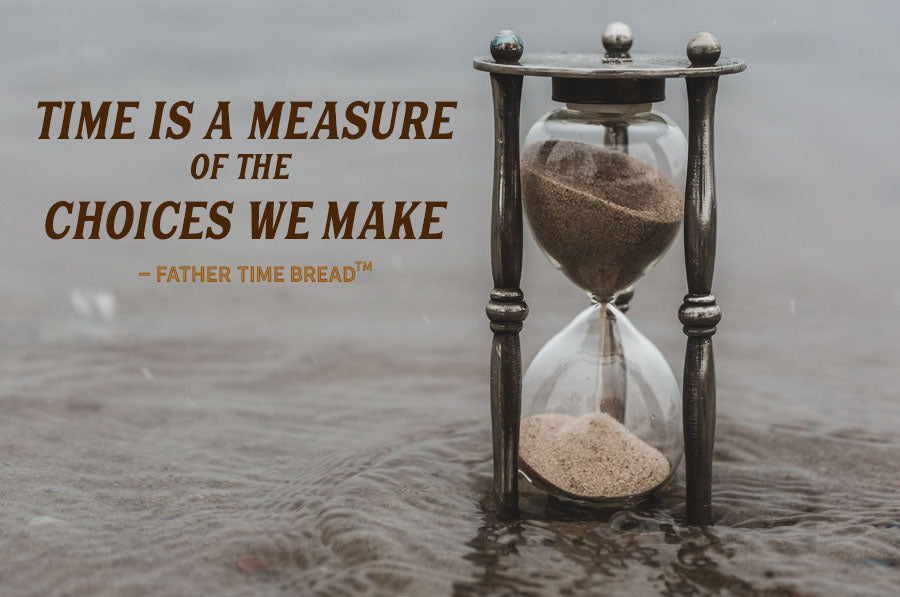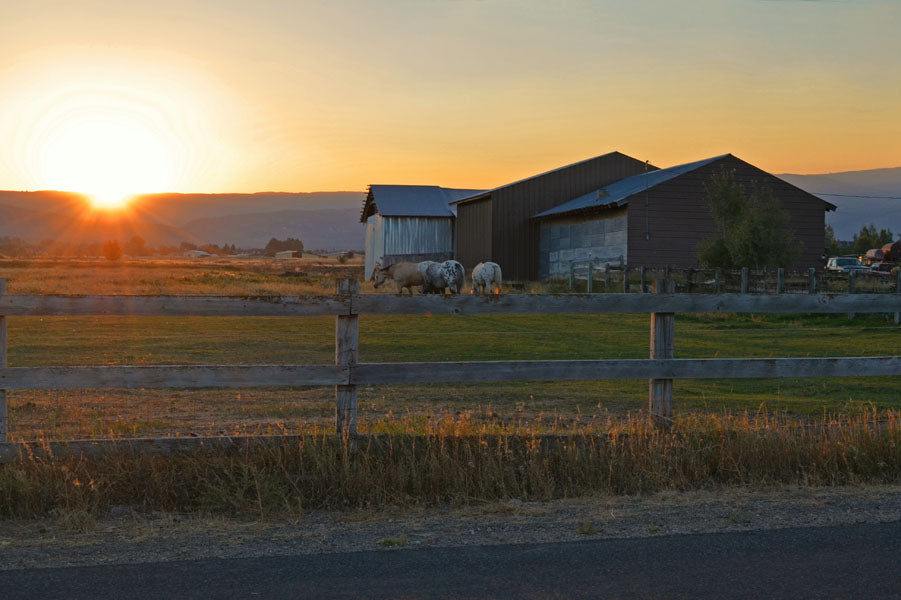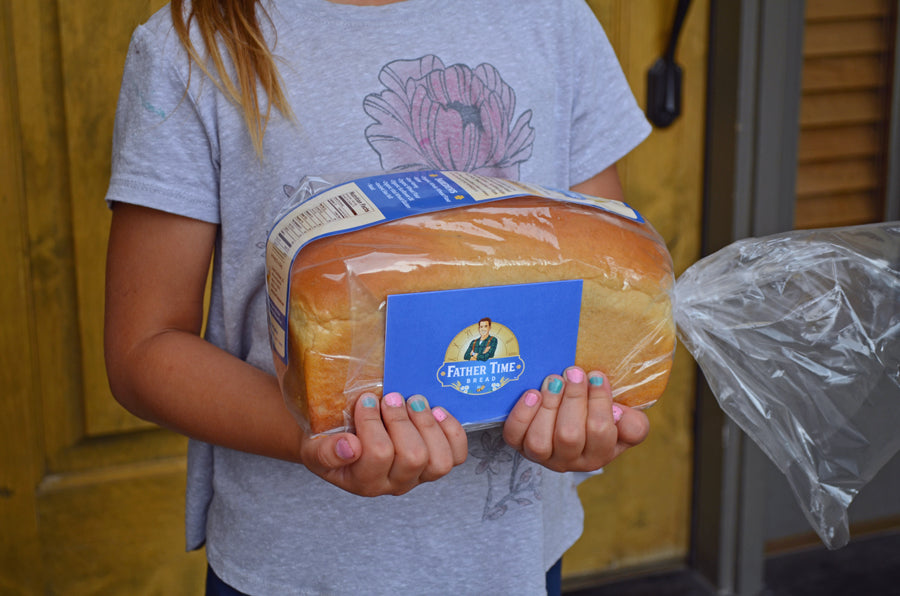
We all feel overwhelmed sometimes with everything on our plate, especially as parents juggling all the demands of life. In those moments, we need a ray of hope to shine through the dark clouds of discouragement and build confidence that there are ways to make the sun shine brighter. We’re here to bring you a ray of hope today as you read this.
First, what’s the big deal about time itself? It can range from feeling like an over-abundant and aimless burden to a stingy and demanding taskmaster. While time is plentiful, it always comes to an end. And while it always vanishes, it always does so at the same rate. It is one resource we all share, and yet we never know when our personal portion will run out for good. The funny thing is that we usually either desperately want more of it or impatiently wish it would hurry on by. In either of those situations, we’re pressed to expose the agency of our choices.
In a nutshell: time is a measure of the choices we make. And importantly it is those very choices that dictate the character we mold and the person we become.
While time is a big deal and we shouldn’t squander it lightly, we don’t have to stress out about it either as long as we proactively plan for how to use our choices wisely. Time is one of our great fascinations. After all, the topic is always timely (pun intended). We named our brand Father TimeTM because we want to help others direct their time more easily, whether it’s by providing tasty and convenient food staples or helpful tips for busy parents.
We are far from perfect in this area and still eagerly scoop up any morsel of insight we can glean from the table of the wise. We just want to share with you a few of the tasty morsels we’ve gathered over time from a wide variety of thought leaders. These lessons have made us far better stewards of our time and choices than we otherwise would be. See if any of them are helpful to you. Perhaps only time will tell!

We’re fans of Dave Ramsey, and one thing he says about money is: “A budget is telling your money where to go instead of wondering where it went.” The same can be said of budgeting our time. Just like our appetite, we usually have far less room to fit what we want or think we can digest into what we realistically have. When we self-reflect and build a thoughtful plan, our authentic choices shine through with clarity and consistency.
Keep in mind, allocating our time is not simply about optimizing our productivity, it’s about clarifying our choices. Productivity might be one of your choices, or it might not be. When you plan, you decide.
You be the judge on how detailed or loose you prefer to plan your schedule in advance. Personal preference and experience play an important role here; but so do discipline and consistency, and that’s usually where we all have room for improvement. Here are some important personal choices to review:
Budgeting time isn’t a perfect science, and very few are masters at it. But the more disciplined we are to prepare and to plan, however loosely or strictly we choose, the more our time will reflect the holistic choices we truly desire.

Kind of sounds like Doc Hudson’s “turn right to go left,” doesn’t it? Well, like Doc Hudson, Greg McKeown knows a thing or two about end goals. McKeown’s landmark book Essentialism took the business world by storm when it was published in 2014. We devoured it and made enormously helpful choices in our lives both at work and at home as a result. McKeown’s thesis is that success often deceptively lures us into failure by the undisciplined pursuit of the trivial many. He urges “the relentless pursuit of less but better…Essentialism is not about how to get more things done; it’s about how to get the right things done.” Perhaps one reason why we like this book so much is how he artfully connects discipline with choice as it relates to our time: “The way of the Essentialist is the path to being in control of our own choices.”
It is from McKeown (a Brit) that the two of us learned the actual origin of the English word “priority.” Apparently, the word was adopted into the English language in the 1400s, but interestingly was always used in the singular form “priority” until the 1900s when the plural form “priorities” suddenly entered the vernacular.
That reminds me of a quarterly division meeting I had once in a large corporation when the division president took the stage and shared our division priorities for the quarter…all two pages and 20+ of them. As you can imagine, none of the items on that list received much “priority” attention that quarter. Let’s get back to the days of using “priority” with its original purpose: identifying the one thing we need to choose as our top focus. Otherwise the undisciplined pursuit of the trivial many could compromise the impact of our choices on the crucial few things that are truly important.
What is truly essential for you? What do you absolutely need to focus on in order to move the dial in what you’re trying to do? What other less crucial items sometimes get in the way, and what choices can you make to minimize or eliminate them?
Here’s a preview into Essentialism with Greg McKeown:
If you don’t have his book already, this is the kind of book that we have both in print and audio – it’s that good. It will help you think with more clarity and liberation toward a long-term vision on the choices you make now.


Managing your time isn’t always about productivity, but sometimes it is. When I started my first job after graduate school, a couple co-workers took a training class that our company offered called Getting Things Done. I thought it was funny that the training took 3 days and that I would be getting several things done while my co-workers were in training to learn how to “get things done.”
It wasn’t until a couple years later that I was absolutely overwhelmed in my job with incredibly heavy responsibilities, a struggling business, high stakes, and very little margin for error in the choices that I made with the three projects teams that I was managing. I looked at my bottomless email inbox, glanced at my never-ending task list, and made a mental cry for help. I took the bold step of clearing my calendar for three days and took that same three-day Getting Things Done training class. I also read and listened to the corresponding book by David Allen. It changed my life.
Many of the strategies and tactics initially seemed a little awkward or counter-intuitive, but I dove in and committed to trying out the full David Allen Getting Things Done (GTD) system since I knew I needed a major overhaul in my personal productivity. I needed more space to think and more time to work on what mattered most.
I was utterly shocked how rapidly my productivity improved after implementing and using the GTD system. Now, my email inbox is usually kept at or close to zero on most days. That doesn’t mean that I don’t have email follow-ups, but it does mean that I try to mentally process an email just once while it’s in my inbox, and then choose if I will delete, defer, delegate, or do it now. If I choose to defer it for later (when it takes 2+ minutes to complete) I use the GTD system to migrate the email from my inbox into a set of tasks that I’ve created and review regularly based on the projects that line up with my responsibilities. It’s a holistic system that simply works.
Most importantly, it helps me make better choices on what I need to be doing right now. I don’t use my inbox as a to-do list (a big trap that most people fall into until they adopt GTD!), but rather refer to my task and context lists that GTD helped me create. Over the last several years I’ve made several personal adaptations to fit the way that I work. I heartily endorse the David Allen GTD system for helping re-think the way that you process your inflow so that you can make better choices with how, where, and when to do your work. And it’s not just for work, either. It will help you make better decisions for how to use your time at home and in your personal life. For instance, it’s how I capture and organize my grocery shopping list, movies to watch with the kids for Family Movie Night, household chores, or restaurants to try out. When I need to make a snap decision on a random topic, I often have a handy list of pre-written notes on that topic to help guide my decision to a more consistent and desired outcome.
One super-helpful exercise religiously espoused by David Allen in GTD that we’ve also noticed Greg McKeown mention in recent interviews is the routine of the Weekly Review. The Getting Things Done system lays out a very helpful guide for mapping out the upcoming week from high-level strategic responsibilities to specific, tactical, individual tasks. While often neglected or overlooked, this valuable routine can heavily amplify our ability to make good choices in the long-term when we take a moment to put our head above the trees and look at the forest, the valley, and the mountains in their entirety instead of simply narrowing in on the branch within our grasp for the next 24 hours.
In addition to reading Getting Things Done, you will probably want to adopt a software to help you implement the system. David Allen’s company even builds implementation guides you can use to customize that software to maximize the power of the GTD system. If you’re using a Mac I recommend Omnifocus, which is designed to fit GTD. It’s a powerful software and does take some time to learn, just like GTD. If you’re using a PC you’ll probably want to use Outlook and follow David Allen’s guide for how to implement GTD on that program.

We live in a digital age when almost everything, from our mail to our calendars to our GTD software, lives online. That’s fine, but we also need a simple writing tool that is regularly accessible for those moments when electronic methods won’t always suffice: quickly jotting down a note from a conversation, remembering something you don’t want to let slip through the cracks, capturing details quickly, brainstorming an idea list, emptying out to-do items in your head, etc.
Some people like to use small Post-It notes. That might be what you choose, but often they are too small to write down a list and work things out on paper, so Post-it note users find themselves sticking dozens of sticky notes all over their work space. Talk about a headache… Then you have standard 8.5 x 11” paper, which can often be too big and wasteful for short lists, follow-ups, or inflow capture.
What we have found we love is the Jr. legal pad size of paper: 5 x 8” paper pads. We pair them with a convenient padfolio (like this one) and often carry these around with us or have them next to our bed on the nightstand. It’s the perfect size for quickly doing a brain dump on pressing needs at hand, and then selecting what we choose to do with our limited time. But this is a personal choice, so choose something that will be handy and helpful for your writing needs.

Mindfulness and meditation have become more mainstream and perhaps you’ve experimented with them. We’ve seen enormous benefits in our personal lives through meditation as a practice for mindfulness. Being mindful and present in the moment can be a form of mental exercise that promotes health and vitality. Life can be stressful, especially with the complexity and unexpected distractions that surface when raising children. Taking just 5, 10, or 15 minutes each day to pause and meditate can make an enormous difference not only in what we choose to do with our time, but in how we react to the various forces that confront us. It can help us push the pause button and be more reflective of the choices we make in how we act and what we do.
If you’re new to meditation, you’ll greatly benefit from an experienced instructor to get the most from the time you spend practicing meditation. We’ve tried out several meditation apps and enjoy many of them. Our favorite is Suze Yalof Schwartz' masterful creation Unplug Meditation, which has a tremendously helpful app that we subscribe to. It features several different instructors who introduce different themes and methods for mindfulness and meditation. You can filter by duration, theme, or instructor and save playlists to quickly and easily find the type of meditation you’re looking for. There are even meditations for the kids!
Trust us, meditation (like organic) isn’t just for hippies. It’s for everyone. The hippies just had it right.

It doesn’t go exactly as planned every day, and when something unexpected comes up I need to decide what portion to cut that day. But it lays out a default plan I strive to follow. It also helps me move much faster each morning than I otherwise would if I simply woke up and meandered about trying to think of what to do next to get ready.
I’ve also begun building an evening routine that I’d like to follow more regularly that could help me prepare better for my morning routine:
There are three crucial lessons that building routines has taught me:


We are omnivores, and that can be both a blessing and a curse. We can derive fuel from so many different food sources, and yet that means we have so many different options to choose from. It’s a veritable dilemma, which is why Michael Pollen’s masterful book is aptly named The Omnivore’s Dilemma. Navigating our food choices with informed consciousness can seem like a full-time job!
Our food choices can have a dramatic impact on our energy and outlook. They can also occupy a large amount of our daily time and infuse themselves into cultural traditions in both a family and work setting.
Think about your last two meals. How did you select the food you ate? Did you use any of the criteria below?
How would you weigh those or other personal criteria into your decision-making equation when selecting food? Does anything regularly prevent you from following your personalized and prioritized criteria on a meal-to-meal basis? Are there ways you can plan ahead to conquer those deviations?
What can we do to make it easier to make healthy choices with the foods we eat? Here are a few simple ideas:
Setting just a few personal routines for filtering your food options can help you take consistent control of your food choices rather than being at the mercy of what is simply convenient.

Perhaps you’ll find a few insights you can try out to help make time your servant rather than your taskmaster. Please comment below to let us know what you find helpful, what creative ideas you implement, or what else you find difficult when confronting the dilemmas of time. The power is in each of us to make good things happen – if we choose to do so. The time is now.
Just take it from one of our heroes, Mister Rogers:
Stay in the loop with more time-saving tips and mouth-watering food ideas for busy families from Father Time by joining our email newsletter. You'll get 20% off your first order of amazing Father Time Bread when you join by clicking here.


